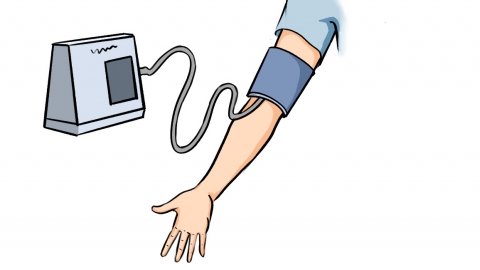What causes high diastolic blood pressure, and how can it be addressed?
Low blood pressure refers to diastolic pressure. Elevated diastolic pressure may be caused by long-term mental stress, lack of exercise, improper diet, renal hypertension, or primary aldosteronism. It can be improved through daily lifestyle adjustments and medication. It is recommended to visit a hospital promptly and receive treatment under the guidance of a physician.

1. Chronic mental stress: Long-term mental tension can stimulate the sympathetic nervous system, causing vasoconstriction and increased peripheral resistance, which in turn raises diastolic blood pressure. Methods for improvement include relieving stress and relaxing through exercise, meditation, deep breathing, maintaining regular作息 habits, and ensuring sufficient sleep.
2. Lack of exercise: Insufficient physical activity can slow blood circulation, promote fat accumulation, increase body weight, reduce vascular elasticity, and elevate peripheral resistance, leading to increased diastolic pressure. Improvement involves engaging in at least 150 minutes per week of moderate-intensity aerobic exercise, such as brisk walking, jogging, or swimming, and incorporating strength training as appropriate.
3. Improper diet: A high-salt diet increases sodium levels in the body, leading to fluid and sodium retention, increased blood volume, and increased sodium levels within vascular smooth muscle cells, causing vasoconstriction and elevated peripheral resistance, which raises diastolic pressure. Improvement involves reducing sodium intake to no more than 5 grams daily, increasing potassium intake, consuming more fresh vegetables and fruits (e.g., bananas, oranges, spinach), and controlling fat intake.
4. Renal hypertension: Caused by kidney diseases such as glomerulonephritis or renal artery stenosis, this condition activates the renin-angiotensin-aldosterone system, leading to fluid and sodium retention and vasoconstriction, which elevates blood pressure, particularly diastolic pressure. Patients often experience symptoms such as edema and proteinuria. Patients can take medications such as captopril tablets, nifedipine sustained-release tablets, or hydrochlorothiazide tablets under a physician's guidance to alleviate symptoms.
5. Primary aldosteronism: Excessive aldosterone secretion by the adrenal cortex causes fluid and sodium retention, increased blood volume, and potassium loss, resulting in elevated blood pressure, often accompanied by hypokalemia, manifesting as muscle weakness, periodic paralysis, and other symptoms. It is recommended to take medications such as spironolactone tablets, eplerenone tablets, or triamterene tablets under medical supervision for improvement.
It is recommended to maintain proper care, follow a light diet in daily life, avoid spicy and irritating foods such as garlic, hot pot, and mustard; and ensure adequate rest without excessive fatigue to avoid compromising health.







